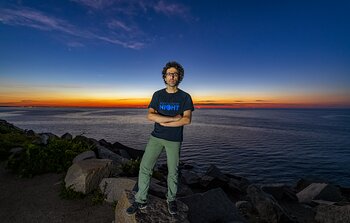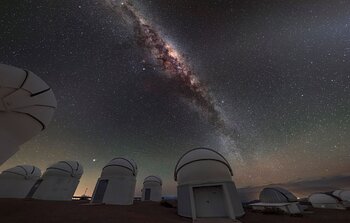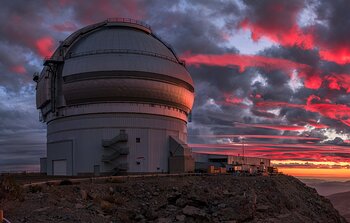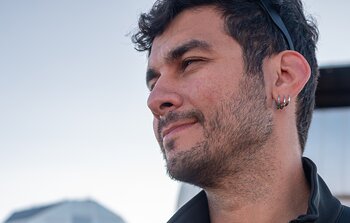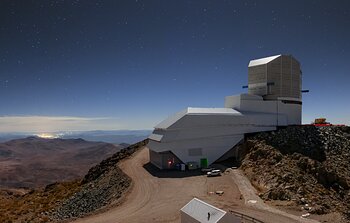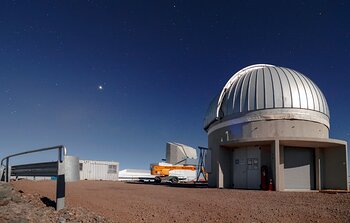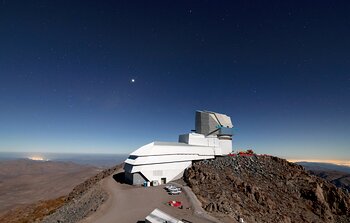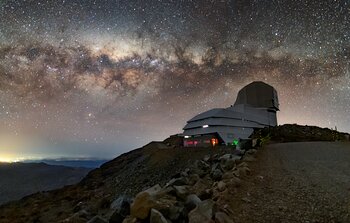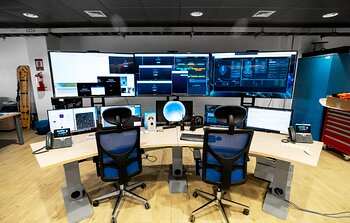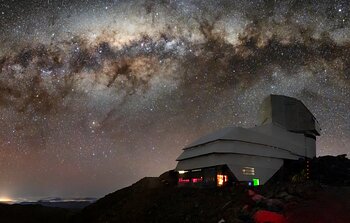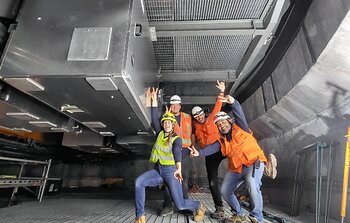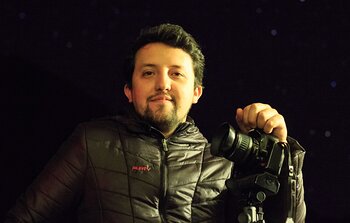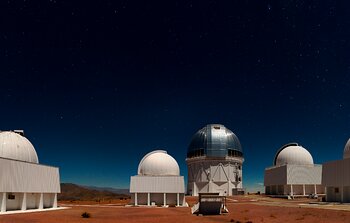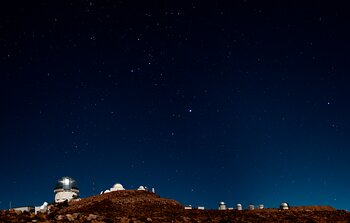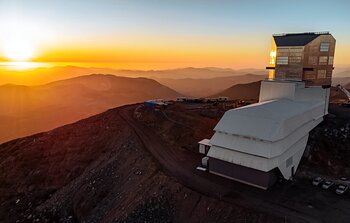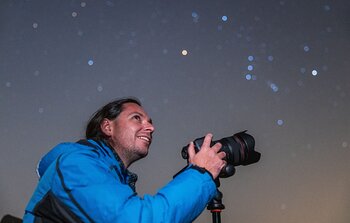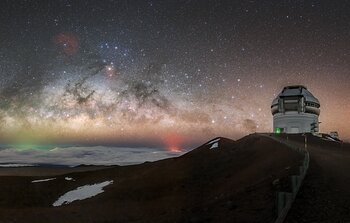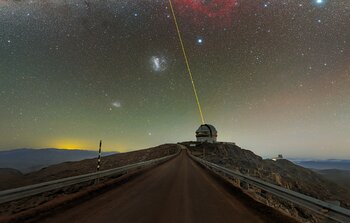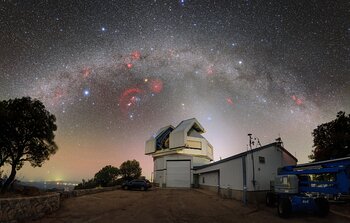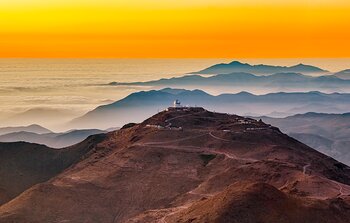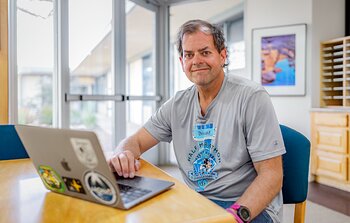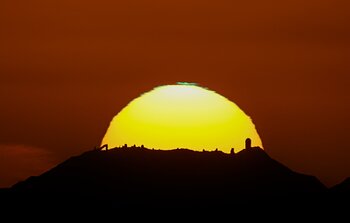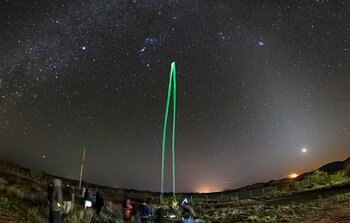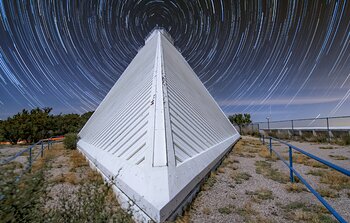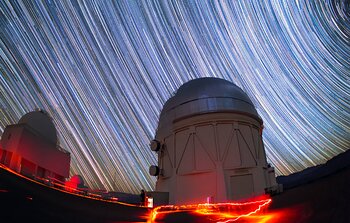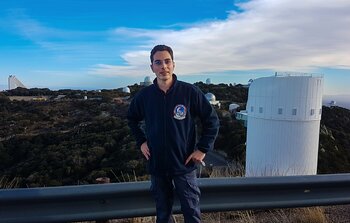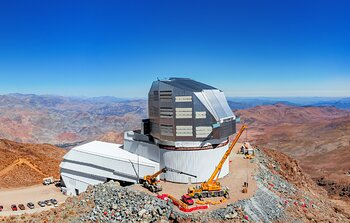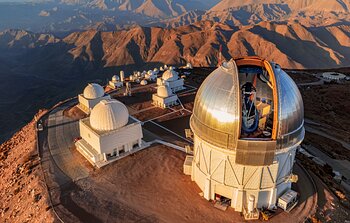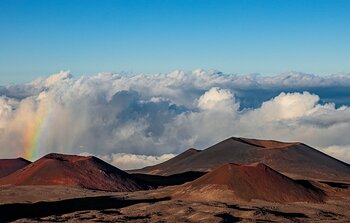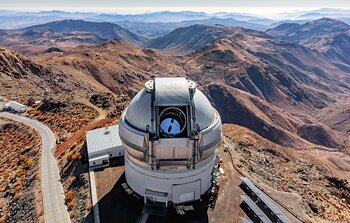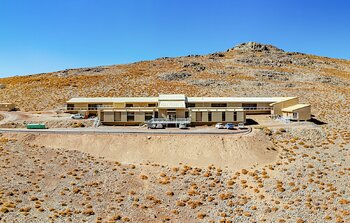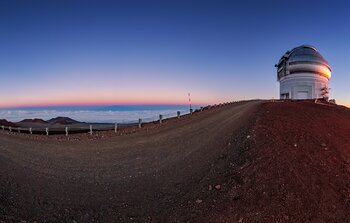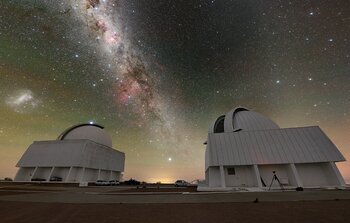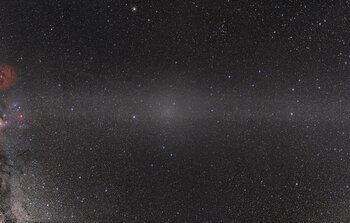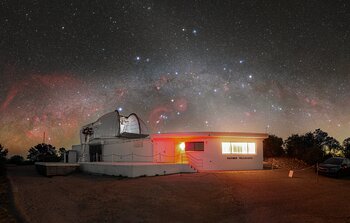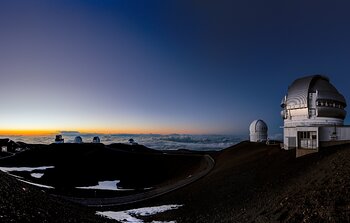NOIRLab Ambassador program
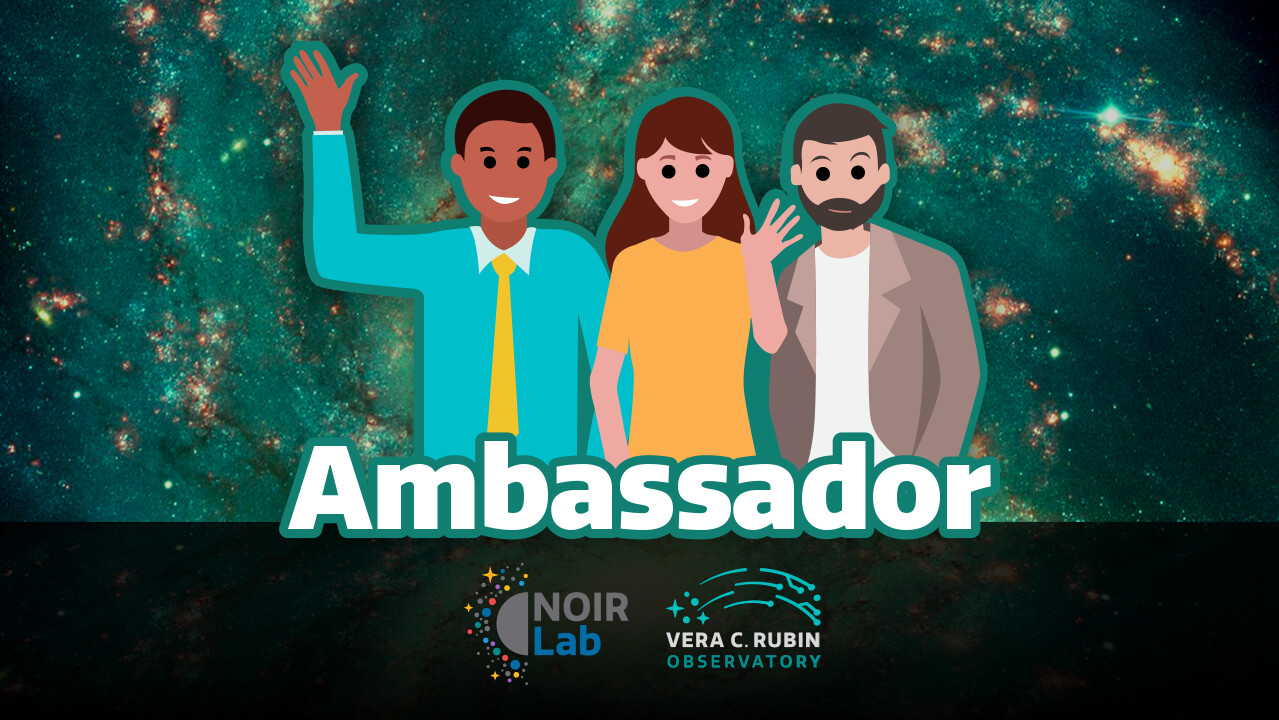
The NOIRLab Ambassador program is a joint initiative with Vera C. Rubin Observatory Construction that aims to increase public engagement with NOIRLab and its Programs, including Rubin Observatory, by working together with motivated and enthusiastic volunteers to share the excitement and science of our organizations.
Ambassadors can be NOIRLab or Rubin staff and scientists as well as external enthusiasts who support our mission in astronomy. They will contribute to NOIRLab’s public engagement efforts in addition to sharing NOIRLab and Rubin science with their own communities in order to spread our mission and science to new audiences.
Ambassador’s Profile
NOIRLab Ambassadors should have at least one of these characteristics:
- Personable, creative, enthusiastic and approachable
- Confident in public speaking in English or Spanish
- Have an interest in promoting public awareness of NOIRLab’s astronomy and related science
- Willing to represent NOIRLab and its Programs, including Rubin Observatory,in a professional manner and promote NOIRLab’s planned initiatives and activities.
- Willing to post NOIRLab provided content (e.g. photos, stories, notice of upcoming events/talks) on their social media accounts and webpages.
- Able to provide creative content that can be used in social media and internal communication platforms in coordination with the Communications team.
NOIRLab Ambassadors
Audiovisual Ambassadors
Babak Tafreshi
Since the 1990s the Iranian-American photojournalist Babak Tafreshi has been documenting scenes of the night sky on all continents; an adventurous journey to connect Earth’s magnificent landmarks to celestial wonders, to bridge art, Earth, and science through visual storytelling.
Read More
×
Read More
He is passionate about promoting the preservation of dark night skies, and nature conservation. Babak started The World at Night project (TWAN) in 2007, with the idea to build connections between humanity and the night sky. He believes blending our diverse heritages under one eternal roof confirms the unified nature of Earth as a home for all mankind. TWAN currently has a team of about 40 photographers from 20 countries.
Bruno Quint
Bruno Quint is a Commissioning Scientist working at Vera C. Rubin Observatory. His primary role is to
support systems integration and testing. With the observatory's construction nearing its end, staff have
begun assembling many components. They want to ensure that every piece works properly together.
Read More
×
Read More
Since the
schedule is very tight, they run these tests at night. Bruno is one of the people responsible for planning
the tests and preparing them to be easily executed. He is also part of the team that collects and analyzes
the data obtained from these tests to confirm that the system behaves as expected.
Bruno started his career as an undergraduate student at the Universidade Federal de Santa Catarina (UFSC) in
the south of Brazil. He studied physics and got involved in astronomical instrumentation projects. After
that, he moved to São Paulo, where he did his master's and PhD, both associated with a new instrument for
the SOAR Telescope called the Brazilian Tunable Filter Imager. After that, Bruno worked at Gemini
Observatory as a Data Science Developer, focusing his efforts on designing unit tests and maintaining
continuous integration tools for the DRAGONS package.
Hernán Stockebrand
Hernán Stockebrand is a passionate Network Engineer working for Vera C. Rubin Observatory, whose journey has
taken him across the realms of technology and the cosmos.
Read More
×
Read More
His professional career began with a particular
blend of interests — astronomy and engineering. Having the privilege of working at numerous astronomical
observatories, he delved into the mysteries of the Universe.
While working as an astronomical guide, he became fascinated with naked-eye astronomical observation. It was
during this initial phase that he developed the desire to share the captivating nightly spectacle with
others. In 2009 he started to take his first steps into astrophotography.
Over the years, his dedication to capturing the essence of the night sky led to remarkable achievements.
Hernan was invited to prestigious astronomical conferences and television interviews. His photographs were
displayed in several exhibitions and appeared on the pages of renowned magazines.
For Hernán, astrophotography is an exquisite medium of expression. It encapsulates the majesty of the night
sky in every frame, allowing him to preserve a fragment of its brilliance. Beyond the technicalities, it's a
way to extend the awe-inspiring experience of a dark, star-studded night to those who may not have the good
fortune to witness it themselves.
His journey as a Network Engineer intertwined with his celestial pursuits has forged an extraordinary
narrative. From gazing at the stars as an astronomical guide to being a recognized astrophotographer
featured in conferences and media, his story is a testament to the power of merging passion with profession.
Petr Horálek
Born in 1986 in the Czech Republic, Petr studied theoretical physics and astrophysics at Masaryk University, Brno. After his studies, he worked briefly as an observer of fireballs at the Department for Interplanetary Matter of the Astronomical Institute of the Academy of Sciences of the Czech Republic.
Read More
×
Read More
During this period he fell in love with astrophotography and decided to take a year-long trip around the world to improve his skills in that field.
As a citizen of a light-polluted Czech Republic, he decided to capture the night skies above the naturally dark places in the world to show people in polluted cities what they are missing above their heads. A long route through the Canary Islands, Australia, New Zealand, the Cook Islands, and South Africa brought him in the end into the heart of the Atacama Desert, first at ESO’s La Silla Paranal Observatory in 2015, and then at NOIRLab's observatories in 2022.
Petr specializes in photographing rare night-sky phenomena. His images capture unique moments, which he calls 'pearls of astronomy', that add to the immeasurable beauty of a dark starry sky — something he thinks everyone should see at some point in their lives. As an International Dark Sky delegate, he tries to raise awareness of the issue of light pollution. His passion is to deliver new points of view to the phenomena and objects in the sky to help outreach in astronomy in the best possible way. For his work, he was awarded several times by NASA with Astronomy Picture of the Day, and asteroid 6822 Horálek is named after him.
Rob Sparks
Rob Sparks is a member of the Communications, Education and Engagement group at NSF’s NOIRLab in Tucson,
where he works on a variety of education and public outreach projects.
Read More
×
Read More
He taught high school physics, math
and astronomy for 11 years at schools on St. Croix, and in Florida,
and Wisconsin. Rob spent received the Fermilab Teacher Fellowship and worked on the Sloan Digital Sky Survey
as well as a Research Experience For Teachers at the National Radio Astronomy Observatory in Green Bank,
West Virginia. Rob is an experienced astrophotographer, a skill which he uses at work and in his personal
life. He can frequently be found performing on improvisation
and comedy stages around Tucson. He is frequently running the roads and trails around Tucson and is a
hardcore Disnerd.
Theofanis Matsopoulos
Theofanis Matsopoulos holds a degree in electrical engineering and he specializes in planetarium film
production, fulldome cinematography, documentary production, visual science communication, 3D animation and
astrophotography.
Read More
×
Read More
He collaborates with world-famous scientific organizations such as the European Southern
Observatory (ESO), European Space Agency (ESA) and NOIRLab. He has created and directed more than 20
documentaries for planetariums and cinemas which are presented all over the world and have been translated
into more than 25 languages. He has also presented four photography/astrophotography exhibitions. He has
received 13 international film awards and he has participated in more than 40 international documentary and
photography festivals.
Tomáš Slovinský
Tomáš was born in 1994 in Kosice. In his childhood he was fascinated by the night sky, interested in space
secrets and observing interesting events like eclipses or meteor showers.
Read More
×
Read More
He was amazed when he first
pointed the lens of his old camera toward the night sky and found out how many objects the camera had
captured compared to the naked eye. This brought him into the world of astrophotography. His biggest passion
is photographing the night sky with natural beauty. Nine of his photographs were honored by NASA’s Astronomy
Picture Of the Day and 13 images as the Earth science Picture Of the Day. You can also see his images in the
BBC Sky At Night magazine, the worldwide gallery The World At Night, International Meteor Organization
magazine, and in the Finnish astronomical magazine Tähdet ja avaruus. He publishes photographs in the
scientific and technical magazine Quark, and he is co-owner and associate director of a school-education
project with an inflatable planetarium. He is also involved in creating programs and lectures at schools.

Andy Tzadinakis
Anastasios (Andy) Tzanidakis is a third-year Astronomy PhD student at the University of
Washington. Andy is passionate about the application of astrophysical time-domain discovery of
variable stars through the use of modern synoptic all-sky surveys.
Read More
×
Read More
His current scientific interest
is long-timescale anomalous stellar variability as a means to discover rare eclipsing binaries and
variable stars using public archival datasets. Andy is also an active member of the
University of Washington Vera C. Rubin Observatory data management team as one of the Alert
Production team with a focus on characterizing multi-band time-series features among the
Legacy Survey of Space and Time (LSST) data products. He is currently serving as the
program coordinator and director of the University of Washington planetarium.
Andy previously held a two-year post-baccalaureate research position at the California Institute of Technology, affiliated with the Zwicky Transient Facility (ZTF) survey. At Caltech Andy was a
co-leader for a volume-limited supernova experiment called the ZTF Census of the Local
Universe (CLU). The ZTF CLU experiment to date is one of the largest volume-limited supernova
samples.
In 2019 Andy earned his bachelor's degree in astronomy from Columbia University in New
York City. At Columbia his primary research was in the field of galactic archeology,
mapping the shape of the Milky Way’s disk using data from all-sky astronomical surveys. He
also had the amazing opportunity to intern at NASA Ames Research Center with the Kepler
Guest Observer Office where he fell in love with the application of open-source software
development in science. At NASA he was a contributor to the open-source Python package
Lightkurve when he wrote Python tools for processing astrophysical time-series data from the
Kepler space telescope.
Outside of academia Andy enjoys photography, filmmaking, surfing, cooking, and gardening!

Bernardita Ried Guachalla
Bernardita Ried Guachalla is from Santiago, but says she feels that her home is in the north of
Chile. When she was a child she spent a lot of time in the Atacama Desert, a few kilometers away
from where the telescopes that have revolutionized our knowledge of the cosmos are based.
Read More
×
Read More
After studying for an undergraduate degree in physics and astronomy at the University of Chile, she decided to do a master's degree and at the same time communicate science during the COVID-19 pandemic. Today she is studying for a PhD at Stanford University, where her research area is observational cosmology. Her research interests involve fundamental questions about
our Universe: what is the origin of the cosmos and how did it evolve? What are matter and
dark energy? What can we learn about the Universe by cross correlating different
cosmological observations? Bernardita is extremely excited to be one of the
scientists who are making known the latest discoveries about the Universe and wants to bring
science to all people, especially in Latin America.
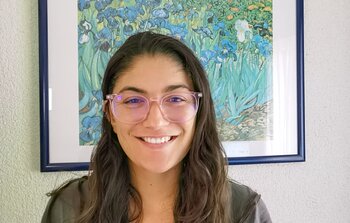
Loreto Troncoso
Loreto Troncoso is a Portfolio Administrator for the Gemini Project Management Office in La Serena. She’s been working in NOIRLab-AURA for the last five years, starting her career as an intern at the Accounting Administrative Service.
Read More
×
Read More
Her background is in business administration and economics, but she has always loved to do crafts activities and to be involved with social media. Loreto loves to communicate with people about what we do in this astronomical environment in an easier-to-understand language and in a more creative and social way.
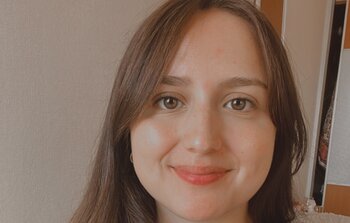
Annais Molina
Annais Molina is a fourth-year astronomy student at the University of Concepción. She recently made an instagram account with the purpose of communicating science. She really enjoys teaching and trying to explain difficult topics in simple ways.
Read More
×
Read More
She is currently working on some projects at university related to astronomical instrumentation, and this year she started a minor in data science.
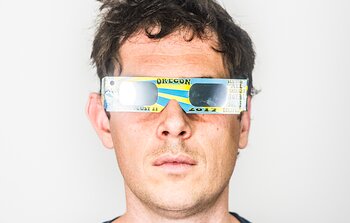
Franco Meconi
Growing up in the 90s, Franco Meconi was always deeply moved by the amazing images of space published in scientific books and magazines.
Read More
×
Read More
Having a passion for astronomy all his life, and after working for over 10 years as a documentary film and TV producer, in 2020 he finally decided to become a full-time content creator and astrophotographer, a discipline in which he’s been practicing since 2015. Since then his goal has always been to share his love and passion for space and astronomy through his images, and he has managed to grow a combined following of more than 35,000 across different social media platforms. In these past years, Franco has collaborated with institutions such as the Argentine Association of Astronomy (Asociación Argentina de Astronomía), the Institute of Astronomy and Space Physics (Instituto de Astronomía y Física del Espacio) and the Buenos Aires Planetarium, amongst others.
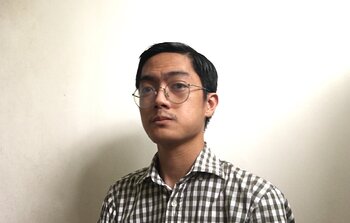
Kenneth Julio
Kael Julio is an undergraduate student taking physics and economics at De La Salle University. Aside from traveling, making art, and reading books, he's also interested in STEM and research.

Lizzeth Ruiz
Lizzeth Ruiz is a biomedical engineer, and a lover of science, astronomy and space. She has an astronomy team called Ceres Mx, who participate in various citizen science projects.
Read More
×
Read More
Her social media platforms (TikTok and Instagram) are dedicated to communicating science, so that future generations can share her enthusiasm for science.
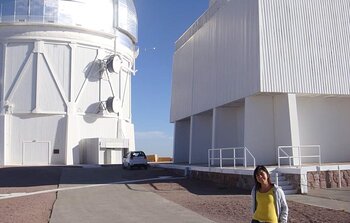
Lucerito Morales
Science lover Lucerito studied physics, then did a masters in astronomy in Chile. Ten years ago she was diagnosed with thyroid cancer and had to change her life because of her health issues: that's when fitness started to become a major part of her life.
Read More
×
Read More
Nowadays she is a personal trainer with a passion for science, so although she has a new passion for fitness and the human body, her passion for astronomy is still there.
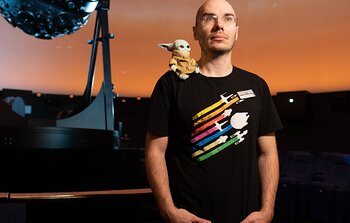
Mathias Jäger
A professional astronomer by training, Mathias spent the last decade working as a science communicator for a number of different organizations.
Read More
×
Read More
He worked in the communication team of the European Southern Observatory, acted as Public Information Officer for ESA/Hubble, implemented an astronomical exhibition in the ESO Supernova Planetarium & Visitor Centre in Germany and worked as press officer for the European Molecular Biology Laboratory. Since 2021 he has been the Head of the Department for Science and Technique at the Mannheim Planetarium, Germany.
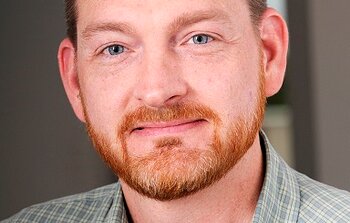
Shawn Laatsch
Shawn Laatsch is the director of the Versant Power Astronomy Center at the University of Maine.
Read More
×
Read More
Over his career he has presented over 10,000 planetarium shows, led educational workshops, and been an invited guest lecturer on astronomy and planetariums in Argentina, Brazil, China, Germany, Greece, Italy, Japan, Mexico, New Zealand, and Russia. He is recognized as a pioneer in the use of digital dome technology and innovations in the field. He was the President of the International Planetarium Society, and is currently a NASA JPL Solar System Ambassador.
Music Ambassadors
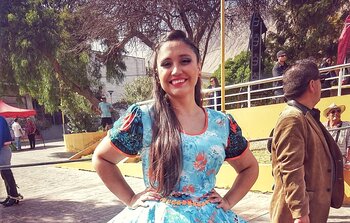
Carolina Vargas
Carolina was born in Tocopilla and is currently based in La Serena, working for NOIRLab as an Experienced Translator/Bilingual Administrative.
Read More
×
Read More
Since she was a little girl she was always involved in artistic events as a singer, dancer, actor and poetry writer. At a young age she started to succeed in most of her city’s singing festivals and then participated in national singing competitions. Now she specializes in singing and dancing Chilean folklore. Throughout her life, she has been part of the following Chilean folk groups: Kuntur, Tikopillán, COFUA, Inacap La Serena, Ayelén and Fiesta Chilena. She loves the way our traditions can be told through music and dance, especially the ones related to her roots: the northern/Andean Chilean music. Music has been a refuge in her life and it is a great companion to balance her other passions: languages and translation. Language arts are vital for communication and provide greater accessibility.

Konstantino Polizois
Konstantino is a prolific and passionate musician who works on a plethora of projects that pertain to the creation of music and sound that accompany visual images.
Read More
×
Read More
He has composed music for international documentaries and planetarium shows, and themes for TV programs and audiobooks in Greece and the biggest astronomical and space organizations in the world.
Education Ambassadors
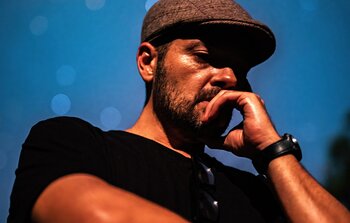
Alejandro Sommer
For 10 years, for Alejandro Sommer, the conservation of the skies became a lifestyle, integrating with environmental education and tourism, since people cannot protect what they do not know.
Read More
×
Read More
Under this motto, and with the participation of the indigenous peoples Guaraníes de Misiones, (Argentina) the nature takes on another value, since half of the world passes at night, and it is there where we must reinforce our scope of heritage conservation (natural, cultural , tangible and intangible). This path has put Alejandro in strategic alliances with conservation entities and universities, "because we have the responsibility of returning the world to its natural state" and with this, the results of triple impact benefit local societies.

Erin Abraham
Erin Abraham is currently in her second year of a PhD in engineering physics. She majored in
astronomy and astrophysics, and although her degree is in engineering physics, she has a strong
focus on astrophysics, along with astrophysical research for her dissertation.
Read More
×
Read More
Her main passion
is teaching and interacting with people about astronomy; outside of her degree, she volunteers
at a Smithsonian-affiliated museum as an astronomy expert, answering questions about space in
their new JWST exhibit, and running space-themed events for the community. She is also an active
volunteer for her university at their monthly astronomy open houses, where she gets to teach the
general public about astronomy research and how to remotely operate 1-meter telescopes, and at
the University's outreach events, including Women in Science, Women in Aviation, and Women in
STEM days for local middle and high school students. Outside of science communication, Erin is
creative — she spends her free time crocheting, drawing, and painting. She loves making art
related to her branch of science — massive binary stars systems.
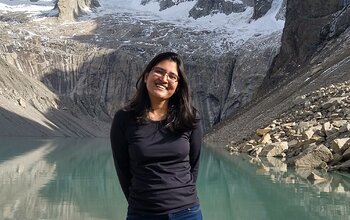
Harshitha Parashivamurthy
Harshitha comes from Bengaluru, known as the Silicon Valley of India, and she is currently
pursuing a doctorate in astronomy in Santiago, Chile.
Read More
×
Read More
She is in her second year of the PhD
program at the University of Chile, where her research focuses on studying the atmospheres and
demographics of exoplanets. While settling into Santiago, she actively searched for
opportunities to engage with the local community. Whether in Santiago or Bengaluru, she has
always been driven by her passion for participating in science outreach programs. She is an
active member of the outreach group at the National Astronomical Observatory, Cerro Calán, where
they organize school and public visits to the telescopes, along with solar and night-sky
observations. One of the main highlights of her stay in Chile has been the opportunity to spend
ten nights at the SMARTS 0.9-meter Telescope at Cerro Tololo, and she would like to take this
opportunity as a NOIRLab ambassador to give back to the warm Chilean society and NOIRlab as well
through sharing her passion and accumulated knowledge of astronomy and science.
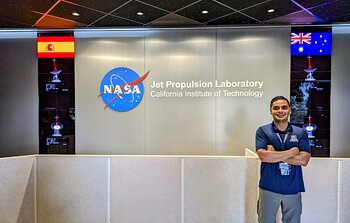
Jesus Gonzalez
Jesus Gonzalez is a Project Manager by day and an amateur astronomer, mobile astrophotographer,
and citizen scientist by night.
Read More
×
Read More
He serves as a NASA/JPL Solar System Ambassador and enjoys
contributing to ongoing astronomical research, having more than 3000
classifications/contributions to various citizen science projects. You can also see him on
social media platforms as Astronomyamigo, where he shares his passion for astronomy. The
enthusiasm he brings to discussing astronomical topics is infectious.
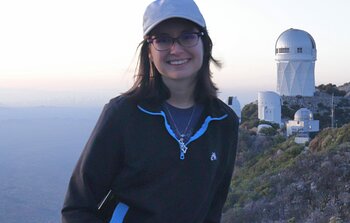
Katya Gozman
Katya Gozman is a 4th-year PhD candidate in astronomy & astrophysics at the University of Michigan with a passion for outreach, education, accessibility, and science writing.
Read More
×
Read More
She started doing astronomy outreach in high school, volunteering as a docent at a local community college's observatory. As an undergraduate at the University of Chicago, she found herself interning at Yerkes Observatory, where she worked on IDATA, a collaborative project to create accessible tools for blind and visually impaired folks to learn astronomy and do image processing. She also got the amazing opportunity to operate the Yerkes 40-inch refracting telescope and give public observing tours with the largest refracting telescope in the world.
Now a graduate student, Katya is part of the Astrobites collaboration, a group of graduate students from around the world who write accessible summaries of both recent astronomy papers on the arXiv and also other astronomy-related posts such as conference summaries, interviews and guides. She is also a docent at the Detroit Observatory, where she gives tours and nighttime viewings with the historic refracting telescope, and public presentations about different astronomy-related topics, and helps with astrophotography endeavors with the refractor. Most recently, Katya has been a teaching assistant for a unique UMich undergraduate class on ground-based observatories that is taught at Kitt Peak. She had the amazing privilege to live at Kitt Peak for a month and help take students through the entire process of writing mock observing proposals, doing an observing run at MDM observatory, and completing a research project. In that time she also visited the majority of the telescopes on the mountain (and at other sites around Tucson) and learned a lot about the design, structure, and science of the myriad of facilities, as well as having the amazing chance to shadow observers at different telescopes such as the Mayall and WIYN.

Lucerito Morales
Science lover Lucerito studied physics, then did a masters in astronomy in Chile.
Read More
×
Read More
Ten years ago
she was diagnosed with thyroid cancer and had to change her life because of her health issues:
that's when fitness started to become a major part of her life. Nowadays she is a personal
trainer with a passion for science, so although she has a new passion for fitness and the human
body, her passion for astronomy is still there.

Mariano Dominguez
Mariano Dominguez is an associate professor at the Cordoba Observatory at the National University of Cordoba and Independent Researcher at CONICET, Argentina.
Read More
×
Read More
He is currently Academic Secretary of the OAC-UNC. Mariano researches the origin and composition of dark matter using Astrostatistics tools and Machine Learning applications. He also participates in the development of temporal and multiple messenger astronomy in Argentina with the TOROS optical telescope and new radio telescopes. Mariano coordinates) the Argentine group that participates in the Vera C. Rubin Observatory, where it is part of the DESC, TVS and ISSC collaborations. He is passionate about teaching and communicating science at all levels, including the development of a Diploma in Data Science, postgraduate courses, training of teachers and especially talks for all audiences. In his free time, he likes to read, play basketball and climb (trekking) to contemplate nature and the night sky with his family.
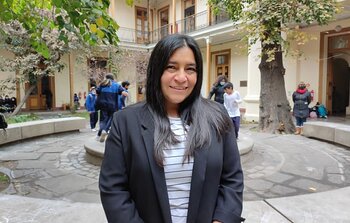
Maritza Arias
Maritza Arias is a professor and master in Astronomy who founded the group CAACh (Chilean Amateur Astronomical Community) to communicate astronomy 12 years ago.
Read More
×
Read More
The group has held 14 astronomical camps for the general public. Maritza has had the opportunity to offer more than 30 astronomy talks and workshops, and develop 3 seasons of the "Astronomy Dialogues" program. He received the AURA-Padre Picetti awards for scientific and astronomical education, and the Global Teacher Prize Chile for his project "Mathematics Applied to Astronomy for Education" in Chile. It is part of NAEC-Chile, Andean Regional Office of Astronomy for Development, UNAWE Chile, and the Educational Astronomy Teaching Network created by 4 Chilean professors. She has a Diploma in General Astronomy and another in Observational Astronomy, as well as a Master's Degree in Astronomy. She is a science lover, especially Astronomy, and studied Physics and has been trained in Dark Skies Protection, which allowed her to participate with her students in the Children of the Stars program using Globe at Night activities.

Mathias Jäger
A professional astronomer by training, Mathias spent the last decade working as a science
communicator for a number of different organizations.
Read More
×
Read More
He worked in the communication team of the
European Southern Observatory, acted as Public Information Officer for ESA/Hubble, implemented
an astronomical exhibition in the ESO Supernova Planetarium & Visitor Centre in Germany and
worked as press officer for the European Molecular Biology Laboratory. Since 2021 he has been
the Head of the Department for Science and Technique at the Mannheim Planetarium, Germany.

Shawn Laatsch
Shawn Laatsch is the director of the Versant Power Astronomy Center at the University of Maine.
Read More
×
Read More
Over his career he has presented over 10,000 planetarium shows, led educational workshops, and
has been an invited guest lecturer on astronomy and planetariums in Argentina, Brazil, China,
Germany, Greece, Italy, Japan, Mexico, New Zealand, and Russia. He is recognized as a pioneer in
the use of digital dome technology and innovations in the field. He was the president of the
International Planetarium Society, and is currently a NASA JPL Solar System Ambassador.
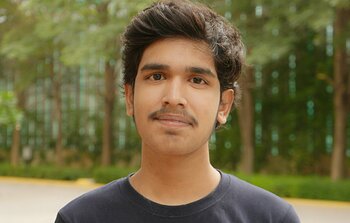
Teja Begari
Teja Begari is an amateur astronomer, a young researcher and science communicator from India.
Read More
×
Read More
Teja Begari is an amateur astronomer, a young researcher and science communicator from India.
He worked on a research project on AM CVn systems (published in JAAVSO - Begari & Maccarone (2023))
and is currently focusing on Pulsars and Black Holes. He has been a part of the AAVSO Ambassador program
and has been AAVSO's youngest ambassador and a member in the organisation's history of 112 years.
He is also a member of the AAVSO Board Nominating Committee - 2024. His articles have been published internationally in English,
Mandarin, and Serbian. He is extremely passionate about outreach, popularizing science & debunking myths.
He has spoken at numerous forums and conferences both in India and internationally.
Additionally, as a core ally of gender equity, Teja believes in diversity and inclusiveness.
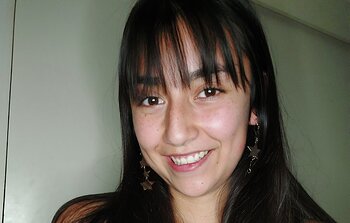
Valeria Alvarez
Valeria Alvarez has a bachelor's degree in astronomy from the University of La Serena and is currently pursuing a master's degree in the same discipline.
In her spare time, she is passionate about scientific outreach, presenting astronomical talks to schoolchildren in the region in the hope of making science accessible to them.
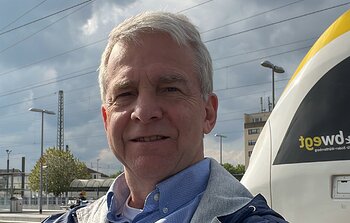
Martin Ratcliffe
Martin is a planetarium professional of more than 35 years, past member of LSST EPO working
group, and passionate about spreading Rubin Observatory and Kitt Peak news.
Read More
×
Read More
He is a contributing
editor of Astronomy magazine (monthly night sky column). He first visited Kitt Peak in 1979 and
his interest has continued ever since. Martin is also a former President of the International
Planetarium Society.
Dark Skies Ambassadors

Alejandro Sommer
For 10 years, for Alejandro Sommer, the conservation of the skies became a lifestyle, integrating with environmental education and tourism, since people cannot protect what they do not know.
Read More
×
Read More
For 10 years, for Alejandro Sommer, the conservation of the skies became a lifestyle, integrating with environmental education and tourism, since people cannot protect what they do not know. Under this motto, and with the participation of the indigenous peoples Guaraníes de Misiones, (Argentina) the nature takes on another value, since half of the world passes at night, and it is there where we must reinforce our scope of heritage conservation (natural, cultural , tangible and intangible). This path has put Alejandro in strategic alliances with conservation entities and universities, "because we have the responsibility of returning the world to its natural state" and with this, the results of triple impact benefit local societies.
Art Ambassadors

Kenneth Julio
Kael Julio is an undergraduate student taking physics and economics at De La Salle University. Aside from traveling, making art, and reading books, he's also interested in STEM and research.

Loreto Troncoso
Loreto Troncoso is a Portfolio Administrator for the Gemini Project Management Office in La Serena.
Read More
×
Read More
She’s been working in NOIRLab-AURA for the last five years, starting her career as an intern at the Accounting Administrative Service. Her background is in business administration and economics, but she has always loved to do crafts activities and to be involved with social media. Loreto loves to communicate with people about what we do in this astronomical environment in an easier-to-understand language and in a more creative and social way.
How to join the program
Please indicate your interest in the following areas in this form (may be more than one area):
- Audiovisuals Ambassador (Image and Video)
- Music Ambassador
- Art Ambassador (painting, drawing, knitting, etc.)
- Education Ambassador
- Social Media Ambassador (influencers, etc.)
- Dark Skies Ambassadors
NOIRLab’s Ambassador program is open to NOIRLab and Rubin Construction staff, affiliates and scientists as well as external people.
Selection process
Candidates go through a selection process with a committee that will review their application and decide which candidates are selected. The committee is made up of the Head of Communications, Education and Engagement of NOIRLab; NOIRLab Communications Manager; Rubin EPO representative; Rubin social media coordinator; and NOIRLab social media coordinator. The application remains open, with a one-month review process. We notify new ambassadors by email.
Time commitment
This is a flexible position that adapts to your availability, but we require a minimum one-year commitment. Ambassadors are contacted as appropriate and offered the opportunity to renew their participation each year depending on their contributions to the Ambassador program. They will also be able to help us welcome new ambassadors.
What to expect
Once the Ambassador is selected, they receive the following benefits:
Ambassadors Benefits:
- Social media training
- Approved social media template posts
- Ambassador’s content will be published in our website and social media channels with their specific credit
- Special digital folder
- Ambassadors meetups (virtual, quarterly)
- Annual gift and Welcome Kit
- Access to Ambassador community
- If opportunity permits: Occasional special visits to the summit (Gemini North, Kitt Peak, Cerro Tololo or Cerro Pachón)
Seniority (more than 3 years) in the program will also include:
- Special NOIRLab Blog post featuring the Ambassador’s work
- Special video of our Ambassador published in our social media
What Ambassadors will deliver
Once selected, the Ambassador contributes photos, videos, and other creative output that reflect her experiences at NOIRLab, and they collaborate with the social media team to coordinate the sharing of these stories on their own networks. If you have any questions, please contact NOIRLab Social Media Coordinator, Camila Ibarlucea (camila.ibarlucea@noirlab.edu)


































